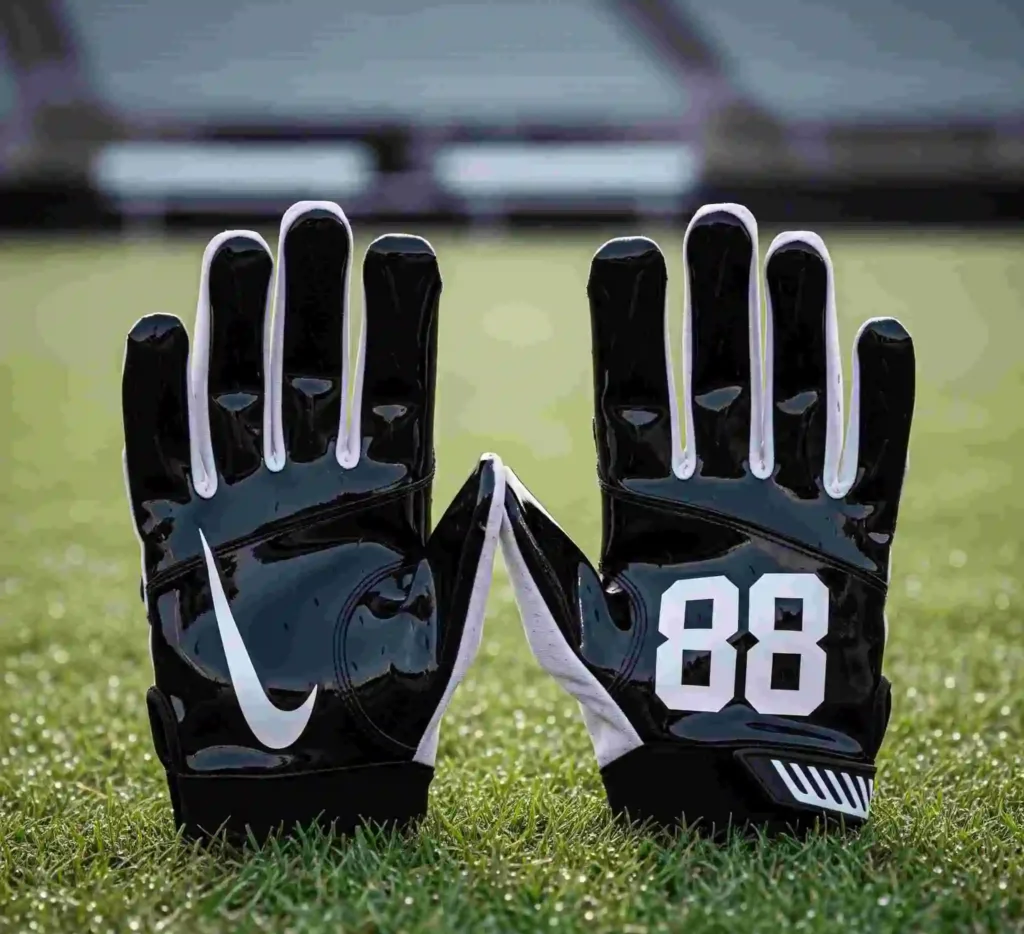If you’ve ever played without football gloves, you already know how much the tiniest details can flip the result of a match. One missed catch, one slip of the ball, and boom—you’re on the wrong side of the highlight reel. That’s where football gloves sneak in. They may appear like just another piece of gear, but trust me when I say they can change everything.
I remember the first time I tried them—I honestly thought they were more of a style thing than a necessity. But the moment I grabbed the ball with a pair of receiver gloves, I realized how big of a difference that sticky palm material makes. Suddenly, catching passes in wet grass didn’t feel impossible anymore. It wasn’t just about looking the part anymore; it was about playing the part and actually feeling in control.

Why Bother With Football Gloves?
Let’s be real. Some players think gloves are optional. I was one of them for a while. But once you try them, it’s hard to go back. Here’s why most serious players wear them:
- Grip is king – Rain, sweat, even a muddy field—gloves help you hold on like glue. When the ball comes flying in, you don’t want to worry about it slipping through your fingers.
- Protect your hands – Between tackles, blocking, and catching, your fingers take a beating. Gloves give you a little extra shield against bruises and scrapes.
- Stay comfortable – Sweaty palms? Not fun. Good gloves keep your hands dry and breathable so you can focus on the game.
- Confidence boost – When you’re not worried about fumbling, you play more aggressively, and that changes everything.
If you’ve ever seen a soccer goalkeeper without gloves, you know how weird that looks. That’s because goalkeeper gloves are basically their lifeline. It’s the same story in football—once you start using them, they feel essential.
Different Football Gloves for Different Roles
No two gloves are designed equally. Your needs will determine which pair is ideal.
- Receiver Gloves – Light, sticky gloves designed specifically to aid receivers during highlight catches with speed and grip in mind.
- Lineman gloves – Durable, padded gloves designed for constant contact are essential protection when colliding with opponents on every play.
- Hybrid gloves → A mix of both worlds, if you need balance. Some players like the middle ground because it gives grip and protection without going too far in either direction.
It kind of reminds me of soccer again—some goalkeeper gloves focus more on grip, others on finger protection. It’s all about what your position demands. A wide receiver has different needs than a lineman, just like a keeper has different needs than an outfield player.
Picking the Right Pair of Football Gloves
Here’s what I’ve learned the hard way: don’t just buy the first flashy pair you see online. Think about these things:
- Does the grip actually feel sticky enough? Some gloves look great but lose tackiness quickly.
- Do they fit snugly without cutting off circulation? Loose gloves are useless.
- Are they breathable? Nothing worse than swampy hands mid-game.
- How durable are they if you’re practicing 4–5 days a week? If you’re training a lot, you’ll want something that can take a beating.
- Do you need extra padding, or are you more focused on catching? Linemen and receivers answer this differently.
Goalkeepers go through the same checklist with their goalkeeper gloves—comfort, grip, durability. It’s funny how similar it really is. The only difference is that instead of a football spiraling toward them, they’ve got a soccer ball screaming in at 70 mph.
Taking Care of Football Gloves
Quick tip: if you just toss your gloves into your bag after every game, don’t expect them to last. A few simple habits go a long way:
- Wash them gently (no harsh scrubbing).
- Always air dry them—heat ruins the material.
- Store them flat or in a glove bag instead of crumpled at the bottom of your kit.
- Before matches, test the grip. Some players even dampen them a little for extra stick.
Same deal for keepers with their goalkeeper gloves—they clean and prep them like a ritual. Ask any serious goalie and they’ll tell you they baby their gloves as much as their boots.
Football Gloves and the Mental Game
Honestly, half of sports is mental. When you trust your gear, you stop second-guessing yourself. Football gloves give you that little extra push. You know the ball won’t slip, you know your fingers are safer, and you just play harder.
And it’s no different for goalkeepers. The right goalkeeper gloves let them dive into a powerful shot without thinking twice. That confidence is priceless. Sometimes it’s less about the glove itself and more about what it does for your mindset.
Football Gloves vs. Bare Hands
There are always a few players who insist they prefer bare hands. And sure, if you’ve got strong fingers and perfect technique, maybe you can get away with it. But the truth is, gloves give you an advantage. Period.
Without gloves, you might get a slightly better “feel” for the ball, but you’re also risking slips, fumbles, and injuries. With gloves, you gain grip and protection. It’s like comparing a goalkeeper who plays with gloves versus one without—it just doesn’t make sense anymore. The modern game demands gear that works for you, not against you.
How Football Gloves Have Evolved
Back in the day, football gloves weren’t common. Players relied on raw grip and toughness. As the sport evolved, so too did its gear.
In the early days, gloves were mostly for warmth in cold weather. But by the 1980s, manufacturers started experimenting with sticky materials. Fast forward to now, and you’ve got advanced gloves with engineered tackiness, breathable fabrics, and ergonomic fits that almost feel like a second skin. It’s a lot like the journey of goalkeeper gloves. They started as simple leather pieces, then slowly evolved into the high-tech, latex-padded, finger-protecting tools keepers wear today.
When to Replace Your Gloves
Even the best gloves won’t last forever. You’ll know it’s time for a new pair when:
- The palms look smooth and shiny instead of tacky.
- You notice the ball slipping more than usual.
- The stitching is coming undone. • No matter how much you wash them, they smell like something died.
Most players replace their football gloves every season, sometimes more if they play year-round. And just like keepers cycling through pairs of goalkeeper gloves, it’s part of the sport.
The Role of Brands
If you’ve been glove shopping, you’ve seen all the big names: Nike, Adidas, Under Armour, Cutters, Grip Boost. Each brand has its fans.
- Nike: Sleek designs, reliable stickiness.
- Nivia: Lightweight, often with bold styles.
- Under Armour: Known for durability.
- Kobo : A newer player in the game but quickly growing thanks to their super sticky palms.
Picking a brand is often a personal choice. It’s like asking a goalkeeper whether Nike or Adidas makes the better goalkeeper gloves—everyone has their own answer.
Unlock Hidden Confidence Boosts Now
Many people fail to appreciate that gloves can provide more benefits than just physical performance. They’re about how you feel when you put them on.
Think about lacing up a new pair of cleats or putting on a fresh jersey. That little surge of confidence carries onto the field. The same happens with football gloves.
You feel prepared. You feel sharp. Feeling capable to tackle anything is powerfully motivating. And honestly, that’s sometimes worth more than the actual tackiness of the palms.
Conclusion
Football gloves aren’t just an accessory—they’re part of the game now. They give you grip, comfort, and protection, but more than that, they give you belief. And when you believe your gear has your back, you play better.
So whether you’re catching deep passes as a receiver, blocking hard as a lineman, or even comparing yourself to a soccer keeper with their goalkeeper gloves, one thing’s clear: gloves matter. Probably more than most people think.
The next time you step on the field, pay attention to how your hands feel. Because sometimes, the smallest piece of gear can make the biggest difference.

